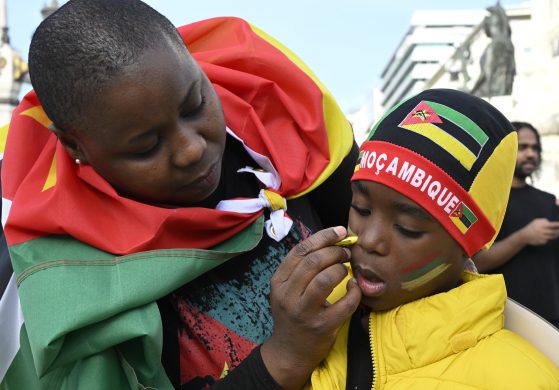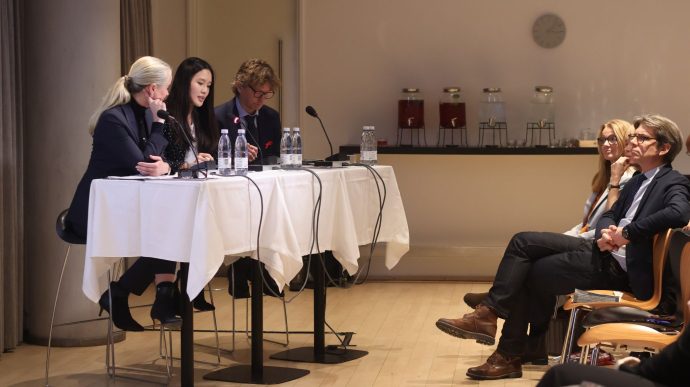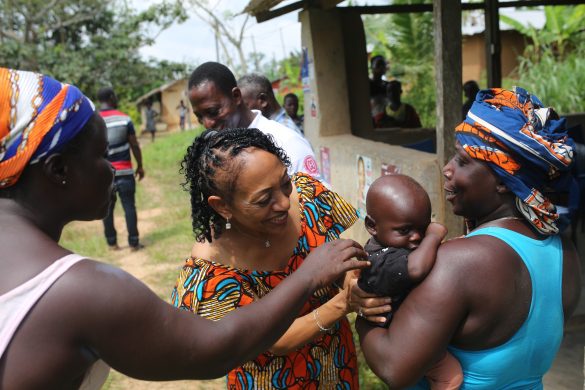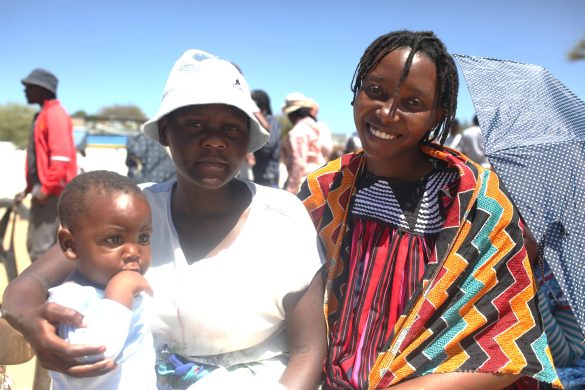Debt Relief is down: Other ODA rises slightly
PARIS, 4 april 2008: The 22 member countries of the OECD Development Assistance Committee (DAC), the worlds major donors, provided 103,7 billion US dollar in aid in 2007, according to a press release from OECD Friday.
The 2007 outturn reflects:
– the end of exceptionally high levels of debt relief (notably for Iraq and Nigeria)
– a small increase in other official development assistance.
– Overall, most donors are not on track to meet their stated commitments to scale up aid and will need to make unprecedented increases to meet the targets they have set for 2010.
Total ODA in 2007
With the end of exceptionally high debt relief, total official development assistance (ODA) from members of DAC fell by 8,4 per cent in real terms in 2007 to 103,7 billion dollar, according to provisional data reported by members.
This represents a drop from 0,31 percent of members combined gross national income (GNI = BNI) in 2006 to 0,28 per cent in 2007.
The fall was expected. ODA had been exceptionally high in 2005 (107,1 billion dollar) and 2006 (104,4 billion), due to large Paris Club debt relief operations for Iraq and Nigeria.
Debt relief grants diminished in 2007 to 8,7 billion dollar as the Paris Club operations tapered off. Excluding debt relief grants, DAC members net ODA rose by 2,4 per cent.
Bilateral aid to sub-Saharan Africa, excluding debt relief, increased by 10 per cent in real terms. This represents an improvement on the recent rate of increase. But it is clear that donors still face a real challenge to meet the Gleneagles G-8 summit projection to double aid to Africa by 2010.
Donor performance
The largest donors in 2007, by volume, were the United States, followed by Germany, France, the United Kingdom and Japan. The only countries to exceed the United Nations target of 0,7 per cent of GNI were Norway (0,95 per cent), Sweden (0,93 per cent), Luxembourg (0,90 per cent), the Netherlands (0,81 per cent) and DENMARK (0,81 per cent).
In 2007, net ODA by the United States was 21,8 billion dollar, representing a fall of 9,9 per cent in real terms. Its ODA/GNI ratio fell to 0,16 per cent. This fall was mostly due to debt relief, which was high in 2006, and a reduction in ODA to Iraq.
Excluding debt relief, there was an increase in ODA to sub-Saharan Africa (+4.4 per cent) in real terms to 4,5 billion dollar) and the Least Developed Countries (+4 per cent to 4,8 billion dollar).
ODA to Afghanistan increased (+11,7 per cent to 1,6 billion dollar) and remained important to Iraq (-25,5 per cent to 3,7 billion dollar).
The United States ODA to fight HIV/AIDS increased by 26,1 per cent to 3,4 billion dollar.
Japans net ODA was 7,7 billion, representing 0,17 per cent of GNI. The 30,1 per cent fall in real terms in Japanese aid was in part due to a decrease in debt relief operations, which were exceptionally high in 2005 and 2006, and to a decrease in contributions to international financial institutions.
Japans ODA has been on a downward trend since 2000, except for an increase in 2005 and 2006 due to debt relief.
The combined ODA of the fifteen members of the DAC that are EU members – which represents 60 per cent of all ODA from the DAC-members – fell by 5,8 per cent in real terms to 62,1 billion dollar, representing 0,40 per cent of their combined GNI.
The fall was mainly due to a decrease in debt relief grants. Excluding these, net ODA from DAC EU members rose by 8,8 per cent.
Aid rose in real terms in nine DAC EU countries as follows:
– Germany (+5,9 percent), reflecting an increase in bilateral aid and contributions to international organisations;
– Ireland (+4,6 per cent), maintaining its ODA/GNI ratio at 0,54 per cent despite the strong increase in Irish GNI;
– Luxembourg (+11,7 per cent), due to the general scaling up of its aid;
– Spain (+33,8 per cent), mainly due to a rise in its multilateral contributions, within a planned process of sustained scaling-up of its aid;
– Austria (+7,6 per cent), Finland (+5,5 per cent), Greece (+5,3 per cent), the Netherlands (+3,1 per cent) and DENMARK (+2,9 per cent) also increased their aid.
Aid from many DAC EU countries fell in real terms, due mainly to decreased debt relief:
Belgium (-11,2 per cent), France (-15,9 per cent), Italy (-3,6 per cent), Portugal (-9,4 per cent), Sweden (-2,6 per cent) and the United Kingdom (-29,1 per cent).
Excluding debt relief, aid rose in these countries with the exception of Portugal and the United Kingdom (where net ODA decreased slightly due to sales of equity investments).
Net ODA by the European Commission rose by 3 per cent to 11,8 billion dollar mainly due to increased programme and project aid. Humanitarian aid also increased, and the ECs disbursement capacity continued to improve.
ODA from other DAC countries rose or fell from 2006 to 2007 as follows:
– Australia (+1 per cent) as increased bilateral ODA offset the return to normal levels of debt relief;
– Canada (-2,7 per cent), due to a fall in contributions to multilateral organisations as well as reduced debt relief;
– New Zealand (+3,7 per cent);
– Norway (+13,4 per cent), in large part due to increased equity investment;
– Switzerland (-3 per cent), due to a lower volume of debt relief.
The following non-DAC economies also reported changes in net ODA as follows:
– Chinese Taipei = Taiwan (-7,6 per cent);
– Czech Republic (-3,6 per cent);
– Hungary (-49,9 per cent);
– Iceland (-6,5 per cent);
– South Korea (+42,8 per cent), as contributions to international organisations rose;
– Latvia = Letland (+23,4 per cent);
– Lithuania = Litauen (+74,8 per cent), due to increased assistance to Afghanistan and contributions to the EC;
– Poland (+3,2 per cent);
– Slovakia (+0,6 per cent).
On a gross basis (i.e. without deducting loan repayments), ODA was 116,5 billion dollar, with the United States (22,6 billion), Germany (13,8 billion), Japan (13,6 billion), the UK (11,8 billion) and France (11,6 billion) accounting for 63 per cent of the total.
Future ODA prospects
At the Gleneagles G8 and UN Millennium +5 summits in 2005, donors committed to increase their aid. The pledges made at these summits, combined with other commitments, implied lifting aid from 80 billion dollar in 2004 to 130 billion in 2010 (at constant 2004 prices).
While a few countries have slightly reduced their targets since 2005, the majority of these commitments remain in force. Nevertheless ODA has only risen at half the rate required to meet the original targets.
Overall, most donors are not on track to meet their stated commitments to scale up aid; they will need to make unprecedented increases to meet their 2010 targets.
The OECD has completed the first comprehensive survey of donors future spending plans to 2010 and the results will be published early in May.
While the findings are still to be finalised, the preliminary conclusions that emerge are that donors have programmed around an additional 11 billion dollar so far into their planned annual spending by 2010, on top of the extra 5 billion dollar for country programmes that they delivered in 2005.
This shows that efforts to increase aid are being factored into some donors forward plans, but it still leaves about 34 billion dollar in 2004 dollars – about 38 billion in 2007 dollars – to be programmed into donor budgets if the commitments made in 2005 to substantially increase aid by 2010 are to be fully met.
For more information, contact Simon Scott in the Development Co-operation Directorate, tel: 00 33 1 45 24 15 60
Læs mere på www.oecd.org/dataoecd/27/55/40381862.pdf















